The Beast Lord New World game has recently been updated. The new version has updated a lot of things, and the Beast Lord New World Animal Illustrated Encyclopedia is one of them. Below, the editor of Source Code.com will take you to take a look at the Animal Illustrated Encyclopedia of Beast Lord’s New World.

Beast Lord New World Animal Illustrated Encyclopedia
【Fighting animals】
1. Orange animals
1. Giant Panda
Carnivora, Ursidae, giant panda is a mammal and is endemic to China. The giant panda's main habitat is the mountainous areas of Sichuan, Shaanxi and Gansu in China. Its body color is black and white, with large "dark circles" around its eyes. It is good at climbing trees and loves to play. 99% of its food is bamboo. Giant pandas are also known as "living fossils" and "China's national treasures".
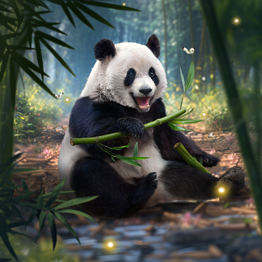
2. Prairie lion
Feline, leopard animal. Distributed in the grassland areas of Africa, it is also distributed in Asia and India. It is the largest average weight of existing cats and the only dimorphic cat in the world. The top predator on the African continent, known as the "King of the Grasslands."
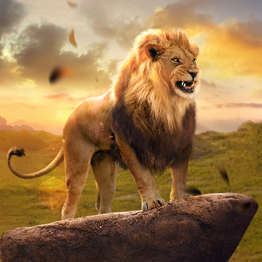
3. White Bengal tiger
Cat family, genus Leopard, referred to as "white tiger", is a world-class protected animal and a national treasure of India. Due to a genetic mutation, the original orange-yellow black striped hair of the Bengal tiger turns into white with black stripes. It is a variant of the Bengal tiger and is not an albino disease as people often think.
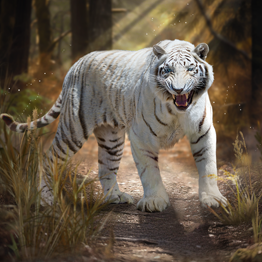
4. Angora longhorn cattle
Bovine, an animal belonging to the genus Bovine, is native to the Ugandan region of Africa and is one of the oldest local cattle breeds.

5. White-faced monk-faced monkey
Capuchin family, monk-faced monkey genus. It shows sexual dimorphism, with the male being larger and black with only a white face; the female is mottled brown with two pale stripes under her eyes. They are distributed in Brazil, French Guiana, Guyana, Suriname and Venezuela. They live in lowland evergreen rainforests and feed on fruits, honey, sugar, flowers or insects.
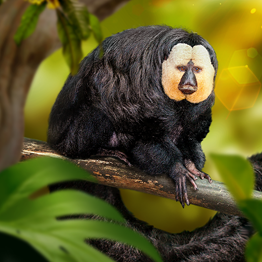
6. Greater one-horned rhinoceros
Perissodactyla, family Rhinocerosidae, genus One-horned Rhinoceros. It is the second largest animal in Asia. It has a bad temper and is very aggressive. The senses of hearing and smell are excellent, but the eyesight is relatively poor. It is now an endangered species and is mainly found in Nepal and northeastern India.
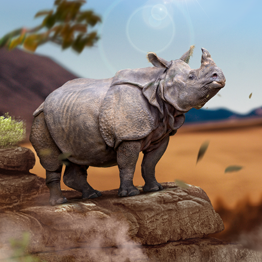
7. African white rhinoceros
Rhinocerosidae, animals of the genus White Rhinoceros. The second largest system among terrestrial vertebrates. Distributed in the grasslands and forests of Africa, it is usually gentle and has almost no natural enemies. But they can become extremely aggressive when their cubs are threatened.
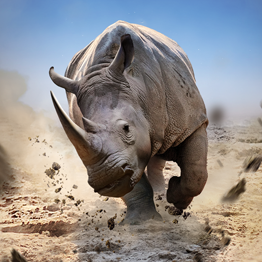
8. African river pig
Suidae, one of the species of the African wild boar. Distributed in vast areas of eastern and southern Africa. They dig holes as nests in tall grass and river reeds. They work day and night and move in small family groups. Their staple food is plant roots, berries, stems and leaves, and wild fruits. Good at swimming and ferocious in nature.
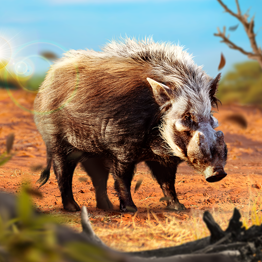
9. Black Panther
Cat family, leopard is a black variant animal. Distributed in Malaysia, Thailand and India, it is a tropical moist forest animal. It has a solitary temperament, is active at night, and can climb trees and swim. It is good at running and jumping, and has extremely sensitive vision, hearing and smell.
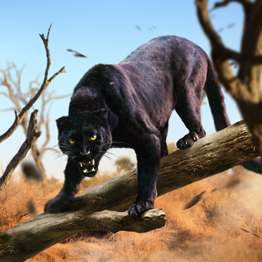
10. Red kangaroo
Kangaroo, genus Macropodidae. The red kangaroo is the largest marsupial in the world. Inhabiting tropical savannas, deserts and temperate forests, it is widely distributed in Australia and is Australia's most iconic animal species. The hind limbs are strong and powerful, running very fast and very good at jumping.
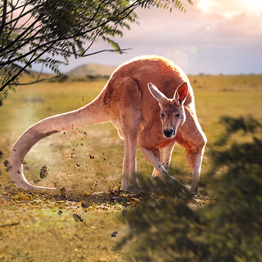
11. Leopard
Feline, leopard animal. It is widely distributed across many regions in Asia and Africa, from the Himalayas to the Sahara Desert. They live in forests, shrubs, wetlands, deserts and other environments, and their nests are mostly built in dense trees, shrubs or caves. It likes to live alone, and its body is covered with black ring spots, which are shaped like ancient Chinese copper coins, so it is also known as the "Golden Leopard".
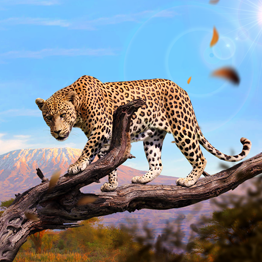
12. Canadian lynx
Cat family, lynx. Their habitats are extremely diverse and they mainly live in the northern forests of Canada and Alaska. They are also found in large numbers in parts of the United States. Cold-loving animals feed on rats, hares, etc., and also prey on small wild boars and deer. The nests are mostly built in rock crevices or tree holes.
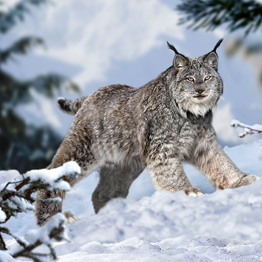
13. Giant moose
Deer family, moose animals. It is the largest deer in the world. It is distributed in the back of Eurasia and the northern part of North America. In addition to short-sighted eyes, moose have very sensitive hearing and smell. Although the body is tall and looks clumsy, the movements of moose are actually quite flexible. , runs very fast and is good at swimming.
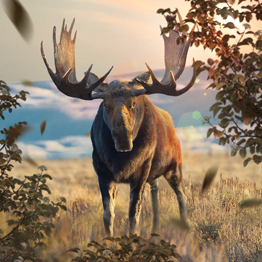
14. Kodiak Brown Bear
The genus Brown Bear belongs to the Ursidae family and is the largest subspecies of the brown bear. Omnivorous animals with excellent sense of smell and eyesight, they can see fish clearly in the water when fishing. Found on Kodiak Island, Alaska.
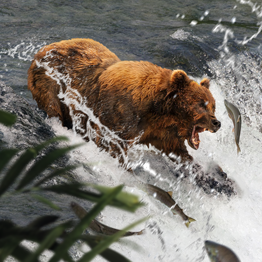
15. Wolverine
The scientific name is the mink, belonging to the family Mustelidae and belonging to the genus Weasel. It is the largest existing terrestrial mustelid animal. It is mostly distributed in the iron leaf forests of the north and areas close to the Arctic, as well as the alpine tundra of the northern hemisphere. The superhero "Wolverine" is also named after it. In Wolverine.
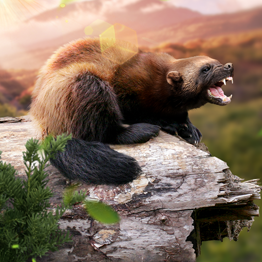
16. Cheetah
The cheetah is the only species of the cat family. Inhabits temperate and tropical grasslands, including semi-deserts and savannahs with sparse trees and bare rock areas. Specialized muscles allow greater swing of the limbs, thereby increasing acceleration. It is the fastest land animal in the world, able to reach speeds of more than 110 kilometers per hour in just three seconds.
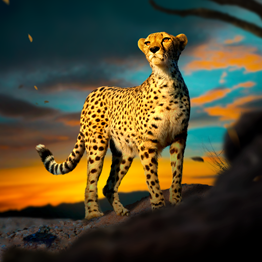
17. American black bear
Ursidae, animals of the genus Ursidae. Widely distributed throughout North America, it is the most abundant ursine animal in existence. The body is huge and the limbs are short and thick. It has a wide range of food habits and will change its diet as the seasons change. It is the fifth largest terrestrial carnivore in the world.
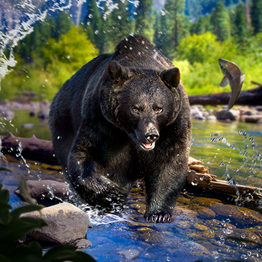
18. Cougar
Felines, American golden cats. Distributed in various environments in the Americas except tropical rainforests, it is good at climbing and jumping and can be obtained throughout the day. Likes to live alone. It is carnivorous and often hunts various vertebrates in ambush for food.
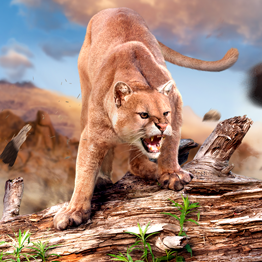
19. Siberian tiger
Feline, leopard animal. Distributed in the Far East of Russia and the Jilin and Heilongjiang regions of Northeast China. It is the largest living cat and one of the top predators in the world. It is known as the "King of Beasts". It is one of the famous animals in the world.
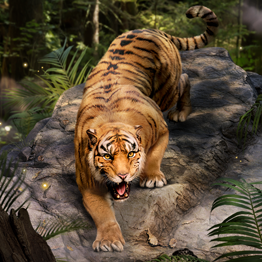
20. Snow leopard
Cat family, leopard animals, mainly distributed in the mountains of central Asia, known as the "King of Snow Mountains", the fur is gray-white, with black spots and black rings, and a relatively long and thick tail. Sensitive, alert, solitary, and nocturnal, it is one of the least understood mysterious animals in the world.
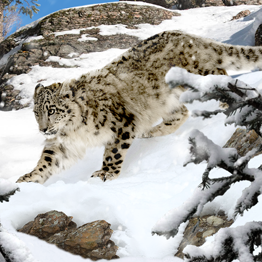
21. Reindeer
Reindeer are animals of the Cervidae family and are mainly distributed in the circum-Arctic region of the Northern Hemisphere, including in Eurasia, northern North America and some large islands. The horns have complex branches, sometimes more than 30 forks, the hooves are wide, the hanging hooves are well developed, and the tail is extremely short. The story of Santa Claus and his reindeer has made it famous all over the world.
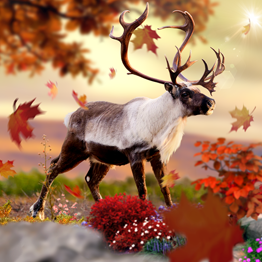
22. Mustang
Equidae, animals of the genus Equus. It is distributed all over the world, with many types of differentiation depending on the region. He has a strong and robust physique, slender and well-proportioned limbs, and a strong personality. They like to live in groups, usually consisting of a male horse, several mares and their offspring. Each population has a clear range of activities and migrates at a rate of 5-10 kilometers per day.
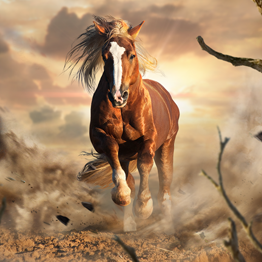
23. Indian elephant
Elephantidae, one of the subspecies of Asian elephants, is gray-brown in color, has two large bulges on the left and right sides of the forehead, and the back is arched upward. They live in groups, with each group having several, more than ten, or dozens of animals. They feed mainly on the twigs and leaves of plants. They are distributed in India and Nepal.
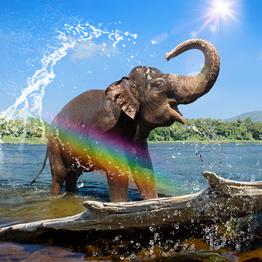
2. Purple animals
1. Black horse antelope
Bovidae, genus animals. Distributed in parts of Africa, it is the national animal of Zimbabwe. It is physically strong and good at running long distances.
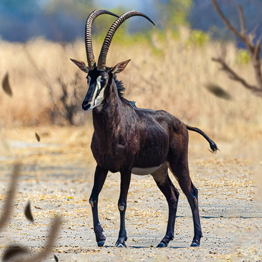
2. Giant Otter
Mustelidae, an animal of the genus Giant Otter. It is the largest species among the 13 species of otters. Found only in tropical rainforests and wetlands of South America, living near lakes and swamps. The body is slender, much like a cylinder, with thick limbs and larger feet. The claws on the limbs are long and sharp, and there are webs between the toes.

3. Deer and dolphin
Suidae, genus animals. It is only distributed in Sulawesi, Indonesia and some offshore islands, and is rare in number. It has very keen hearing and a well-developed sense of smell, but its eyesight is poor. It mainly feeds on roots, leaves and fruits of plants, and occasionally eats insects and other small animals.
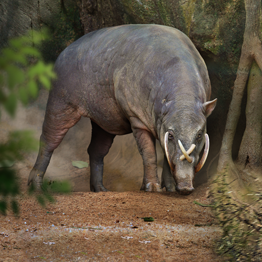
4. Elk
Cervidae, Elk genus animals. It originally grew in the swamps of the middle and lower reaches of the Yangtze River in China. It is almost extinct due to natural climate change and other factors. It is one of the most precious species in the world. It is a large herbivore with thick limbs and wide main hooves. The male deer has large antlers and well-developed hanging hooves. It makes a loud knocking sound when walking.
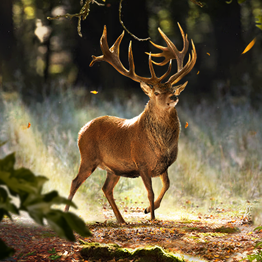
5. Honey badger
The only species of the mustelidae family, the honey badger. They inhabit African tropical rainforests and open grasslands, living alone or in pairs, hiding at dusk and being active at night, and resting in burrows during the day. It is ferocious in nature and has strong survivability. Known as "the most fearless animal in the world".

6. Caracal cat
Cat family, caracal animal. Mainly distributed in Africa, West Asia, northwest South Asia and other places. It inhabits dry wilderness and is also found in mountains, jungles and deserts. It has strong jumping ability, fast running speed, and high prey success rate.
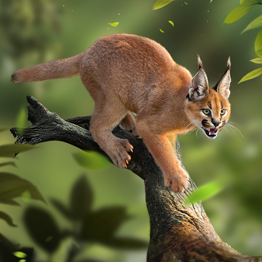
7. Lynx
Cat family, lynx animal. Widely distributed in Europe and northern Asia. The habitats are extremely diverse, ranging from subarctic coniferous forests, cold temperate mixed coniferous and broad-leaved forests to alpine meadows, alpine grasslands, alpine shrub steppes, alpine deserts and semi-deserts. Cunning and cautious, nocturnal, hidden in activities, well-developed hearing and vision, and able to swim.
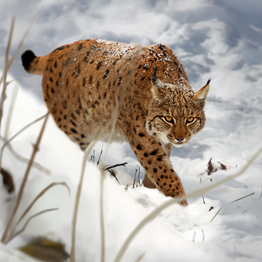
8. Pygmy hippopotamus
Hippopotamus is an animal belonging to the family Hippopotamus. Found only in Côte d'Ivoire, Liberia, Sierra Leone and adjacent areas in West Africa. It inhabits streams, humid forests and swamps. It likes to move alone. Its appearance is very myopic compared to normal hippos, but its body size is 7-8 times smaller than normal hippos.
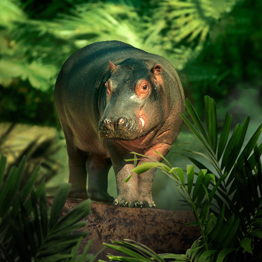
9. Warthog
Pig family, warthog animal. Live alone or in groups and are good at digging holes. It feeds on grass, carex and tuber plants, and occasionally carrion. Loves mud baths. It has strong survival ability and is very adaptable to high temperature and drought environments. It can go without drinking water for several months. It has a ferocious and aggressive temperament and is widely distributed on the African continent.
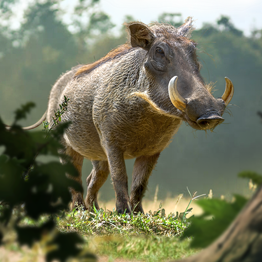
10. Clouded Leopard
Cat family, clouded leopard animals. Clouded leopards are found in southeastern Asia. They have thick and powerful limbs and a tail that is almost as long and thick as the body. It has canine teeth that are the largest in proportion to its body among cats, and can hunt animals much larger than itself.
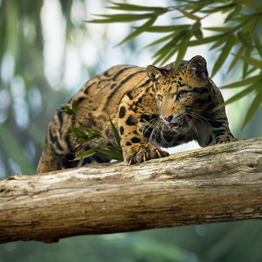
11. Proboscis monkey
Monkey family, proboscis monkey is an animal. Distributed in Kalimantan Island in Southeast Asia. The nose of an adult male will become larger and larger as it ages, reaching a final length of 7-8 cm, which is a unique sign of this genus.
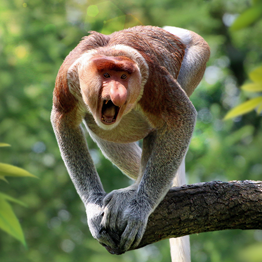
Three, blue animals
1. Dingo
Canidae, animals of the genus Canis. The population mainly exists in Australia, and some communities are scattered in other parts of Southeast Asia and New Guinea. It can inhabit natural environments such as tropical forests, grasslands, deserts, and plateaus, and has very strong adaptability. It has elegant long legs and is very agile in its movements, speed and endurance.
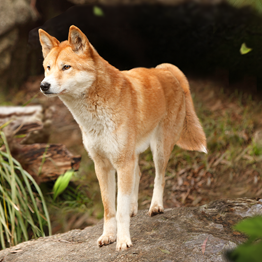
2. Arctic fox
Canidae, fox genus animals. Distributed in the Arctic region, active throughout the Arctic range. In winter, the whole body hair color is pure snow white, only the tail end and hairless nose tip are black. From spring to summer, it gradually changes to blue-gray, and in summer, the body hair is gray-black.
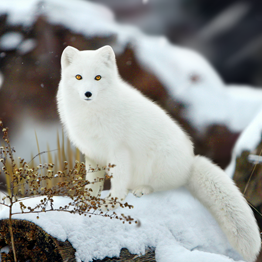
3. Badger
Weasel family, pig badger animals. Mainly distributed in Southeast Asia, it has a ferocious temperament, likes to live in caves, is active at night, and has hibernating habits.
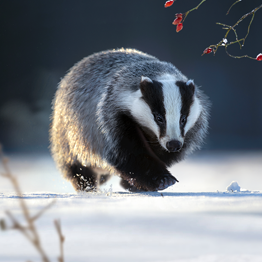
4. Porcupine
Porcupine family, Porcupine genus. Distributed in tropical and subtropical forests and grasslands in Africa, the Mediterranean coast of Europe, and southwestern, southern and southeastern Asia. There are long and hard thorns on the north and tail, which are important organs for system defense against natural enemies.
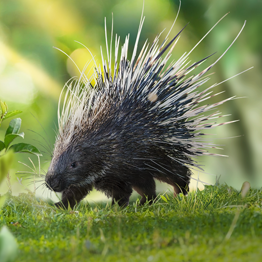
5. Serval cat
Cat family, serval is an animal. Distributed in western, central and eastern Africa. It has slender limbs and graceful body curves, and its shape is very similar to that of a cheetah.
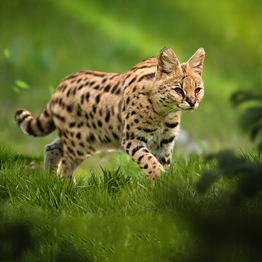
6. Rabbit
Cat family, animals of the genus Rabbit. Distributed in central Asia eastward to Siberia. It has a short and thick body and can adapt to cold and barren environments. It often lives alone in rock crevices or uses the caves of other animals. It is nocturnal and hides at dusk to start activities and hunt. Vision and hearing are well developed.
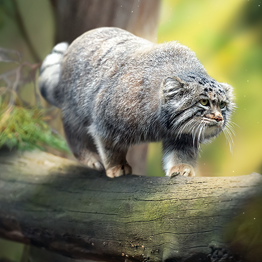
7. Binturong
Civet family, binturong animals. Binturongs inhabit tropical rain forests or monsoon forests. They are a typical aquatic animal that climbs and jumps on tall trees. Binturongs are more active in the morning and dusk and feed mainly on fruits, bird eggs, small birds and small mammals.

【Multiple development animals】
1. Orange animals
1. Zebra
Equidae, animals of the genus Equus. Distributed throughout Africa, zebras are endemic to Africa. Zebras are herbivores. In addition to grass, shrubs, branches, leaves and even bark feed on the beasts. The highly adaptable digestive system allows zebras to survive in low-nutrient conditions, giving them an advantage over other herbivores.

2. Anteater
Anteaters are animals of the family Myrmididae. Mainly distributed in parts of South America, its habitats are diverse, from virgin forests to secondary forests, and tropical savannas. It is a solitary animal that comes out to forage at night. It often destroys ant nests with its forelimb claws. Its staple food is ants, bees and other insects.
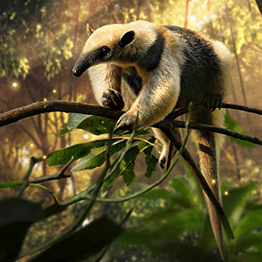
3. Golden-headed lion tamarin
Capuchins, lion-faced tamarins. Mainly distributed in the Brasilia Province of Brazil, the hair on the trunk is mostly black and the head is beautiful golden yellow. It is one of the rarest primates in the world.
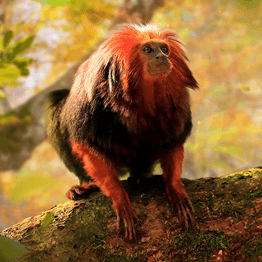
4. Slow loris
Loris family, loris animals. Distributed in Southeast Asia and surrounding areas, it is an omnivore. Its food includes tropical fresh flowers, leaves and berries, insectivores and other arthropods, small birds and reptiles, eggs, fruits, gums, nectar and other vegetation. Often spends the entire night foraging alone. It is good at hunting sleeping birds at night and likes to eat bird eggs. It also likes to eat honey, hence its name "loris".
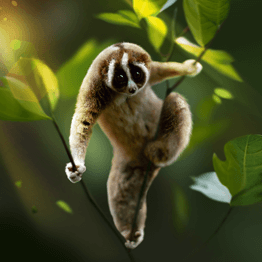
5. Camel
Camelidae, animals of the genus Camel. Distributed in Central Asia and Türkiye, it has a tall body and is resistant to hunger, thirst and heat. Almost perfectly adapted to life in desert areas. It can ruminate, has a docile temperament, often moves alone, and eats coarse grass and shrubs.
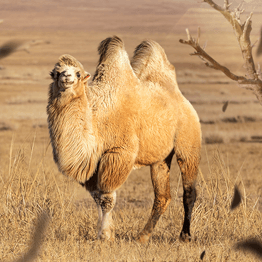
6. Sika deer
Cervidae, animals of the genus Deer. The population is mainly distributed in eastern Russia, Japan and China. It is a specialty species in East Asia. Its coat color is maroon red in summer with many white spots, resembling plum blossoms, hence its name. He has an alert temperament, well-developed senses of hearing and smell, slightly weak vision, and is timid and easily frightened.

2. Purple animals
1. Koala
Koalas are animals of the family Koalaidae. It is Australia's national treasure and a precious primitive arboreal animal unique to Australia. The body is fat, the hair is messy and thick, and there is no tail. Koalas spend almost their entire lives in eucalyptus trees. They spend much of their day sleeping, less than 10% of their time foraging, and the rest of their time mainly spent sitting still.
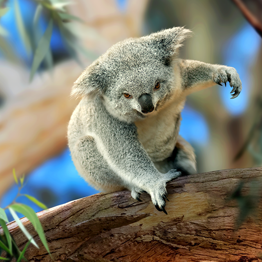
2. Tapir
Tapiridae, tapir genus animals. Distributed in Southeast Asia and South America. The most primitive extant odd-dactyls, retaining original characteristics such as four toes on the front limbs and three toes on the hind limbs. It is similar in size to a pig, has a short retractable nose, is good at swimming and diving, and is herbivorous.
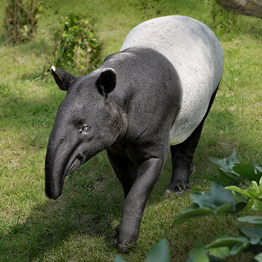
3. Little bear~cat
Little Bear ~ Felidae, Little Bear ~ Cat is an animal. It lives in the Himalayas at an altitude of 2,200 to 4,800 meters in northern Myanmar, Nepal, the Sikkim region of India, and western Sichuan and Yunnan regions of China. It lives in large tree holes or stone caves and rock crevices. They often come out in the morning and evening to look for food, and hide in caves or sleep in the shade of big trees during the day.

4. Alpaca
Camelidae, small alpaca animals. It originated in North America and is now mainly distributed in South America, including Peru, Bolivia, Chile and other countries. They like to live in groups, with more than ten or dozens of animals in each group, led by a strong male camel. Feeds on alpine thorn plants.
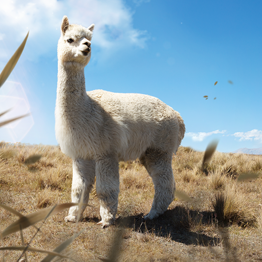
5. Sea otter
Mustelidae, sea otter animals. Distributed in the cold waters of the North Pacific. Sea otters have thin subcutaneous fat but extremely dense fur, making them the animals with the highest hair density in the world.
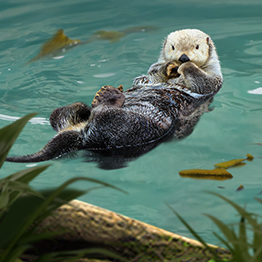
6. Emperor Tamarin
Marmosetidae, strange willow monkey animals. Lives in the southwestern Amazon Basin, eastern Peru, northern Bolivia and Acre and the Amazon in Brazil. It often lives in the upper canopy of trees and rarely comes to the ground. He has two long white beards and is used to sitting quietly in one place eating and resting. It is called "King" because it resembles the German monarch Wilhelm II.
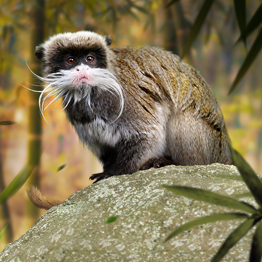
7. Otter
Weasel family, otter animals. Its distribution range is extremely wide, and it can be found in Asia, Europe and Africa. It mainly inhabits rivers and lakes, and especially likes to live in streams and rivers with lush forests on both sides. It is good at swimming and diving, and has keen hearing, vision, and smell. Food habits are complex.
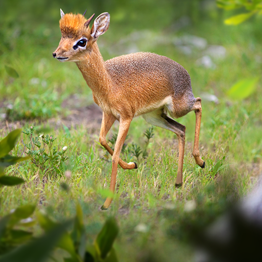
8. Springbok
Bovidae, springbok animals. Distributed in South Africa. It is South Africa's national animal. It lives in tropical savannas and likes dry and open environments. Born to be good at running and jumping, with a speed of up to 94 kilometers per hour, it is one of the fastest creatures in the world.
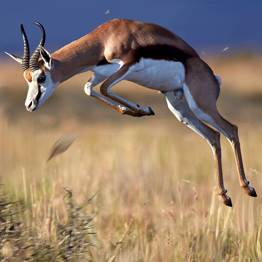
9. Aardvark
Aardvark is an animal of the genus Aardvark. Distributed from East Africa to South Africa south of the Sahara Desert, it is a large anteater. Mainly inhabits hilly and semi-steppe areas. Lives alone in deeper caves. It is very good at digging and can dig into the soil very quickly. It can escape into the soil within a few minutes.

10. Wild donkey
Equidae, animals of the genus Equus. Distributed in Mongolia and northern China. Slightly larger than domestic donkeys, it is a typical desert animal that inhabits open meadows on plateaus, desert steppes, semi-deserts, and desert areas.
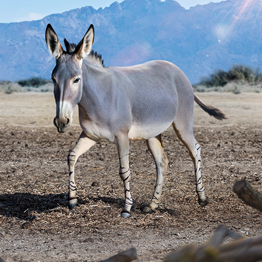
3. Blue animals
1. Hedgehog
Hedgehog subfamily, the collective name for mammals of the order Hedgehogformes. Widely distributed in Asia, Europe and Africa. Short and round in body, with short and dense spines all over its body, hedgehogs are active at night and feed on insects and waxy insects as their main food.
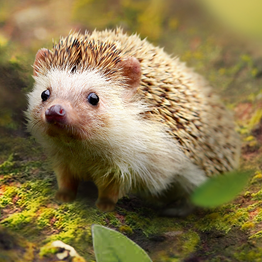
2. Fennec fox
Canidae, fox genus animals. It lives in the deserts of northern Africa and Western Asia. It usually forages at night and has a wide range of food habits. It is one of the smallest canids in the world. The huge ears are the most obvious sign of the fennec fox, which helps dissipate heat in the hot desert and is known as the fennec fox. Known as "the cutest animal in the world".
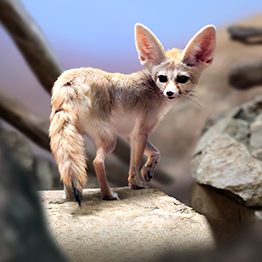
3. Platypus
Platypus, the only species in the genus Platypus. It is one of the most primitive mammals, only distributed in Australia, and is considered to be an incompletely evolved mammal.
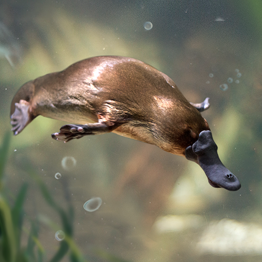
4. Yellow-throated marten
Mustelidae, mink animals. Mainly distributed in East and Southeast Asia and the northeastern region outside Russia. It lives in mountain forests or hilly areas, burrows in tree holes and rock caves, is good at climbing trees and steep rocks, and moves quickly. Because it likes to eat honey, it is also known as the honey dog.
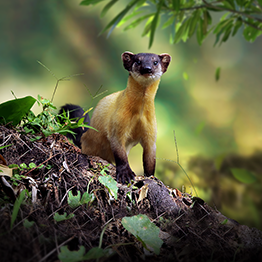
5. Giant squirrel
The giant squirrel belongs to the family Sciuridae. Distributed in southeastern Asia, it inhabits high trees in tropical and subtropical monsoon forests below 2,000 meters above sea level. It is a typical arboreal animal.
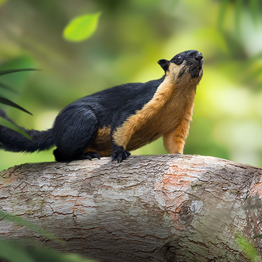
6. Ling Weasel
Animals of the Weasel family, Weasel. Distributed in Europe, Asia, North America, Africa and other places. It is fast and agile, with a brown or brown back and a white belly in summer, and a white coat in winter.

7. Honey~Bear
Raccoon family, bear genus. Inhabits the rainforest lowlands of Mexico and parts of Central and South America. Omnivorous, it mainly eats fruits, and sometimes eggs, insects and birds.
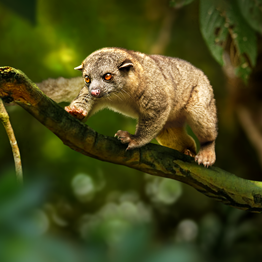
8. Dog antelope
Bovidae, animals of the genus Canis, mainly live in the jungles of South Africa and East Africa. They pursue monogamy, are strong and agile, and move quickly. Known as the cutest antelope.
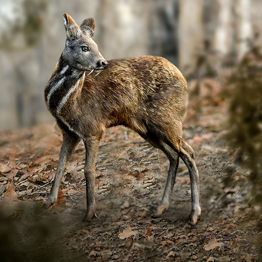
9. Little raccoon
Procyonidae, raccoon genus animals. Found across much of North America, it is extremely adaptable and can be found in a variety of habitats and easily lives near humans. They require constant access to water and like to live in moist woodlands.
